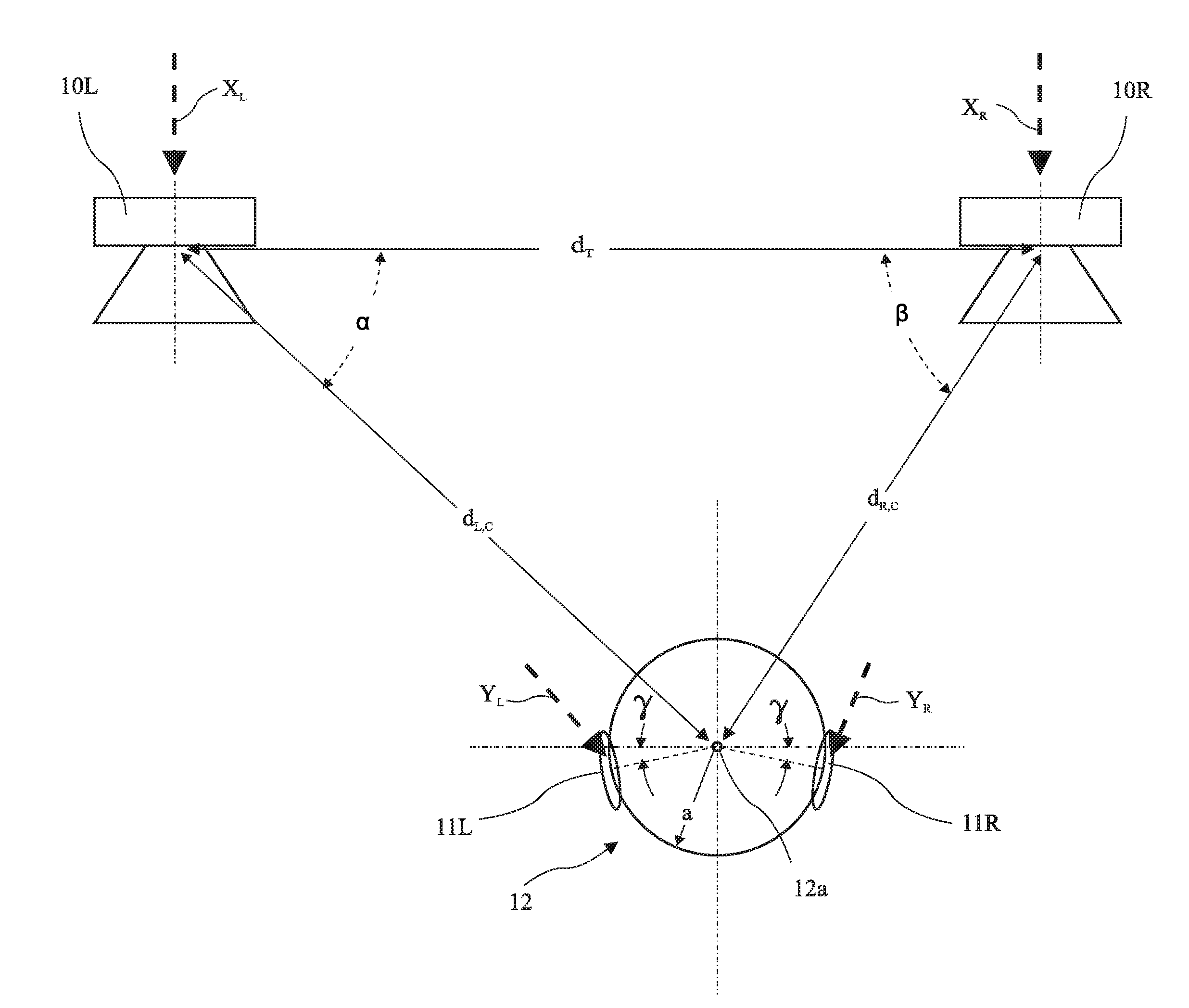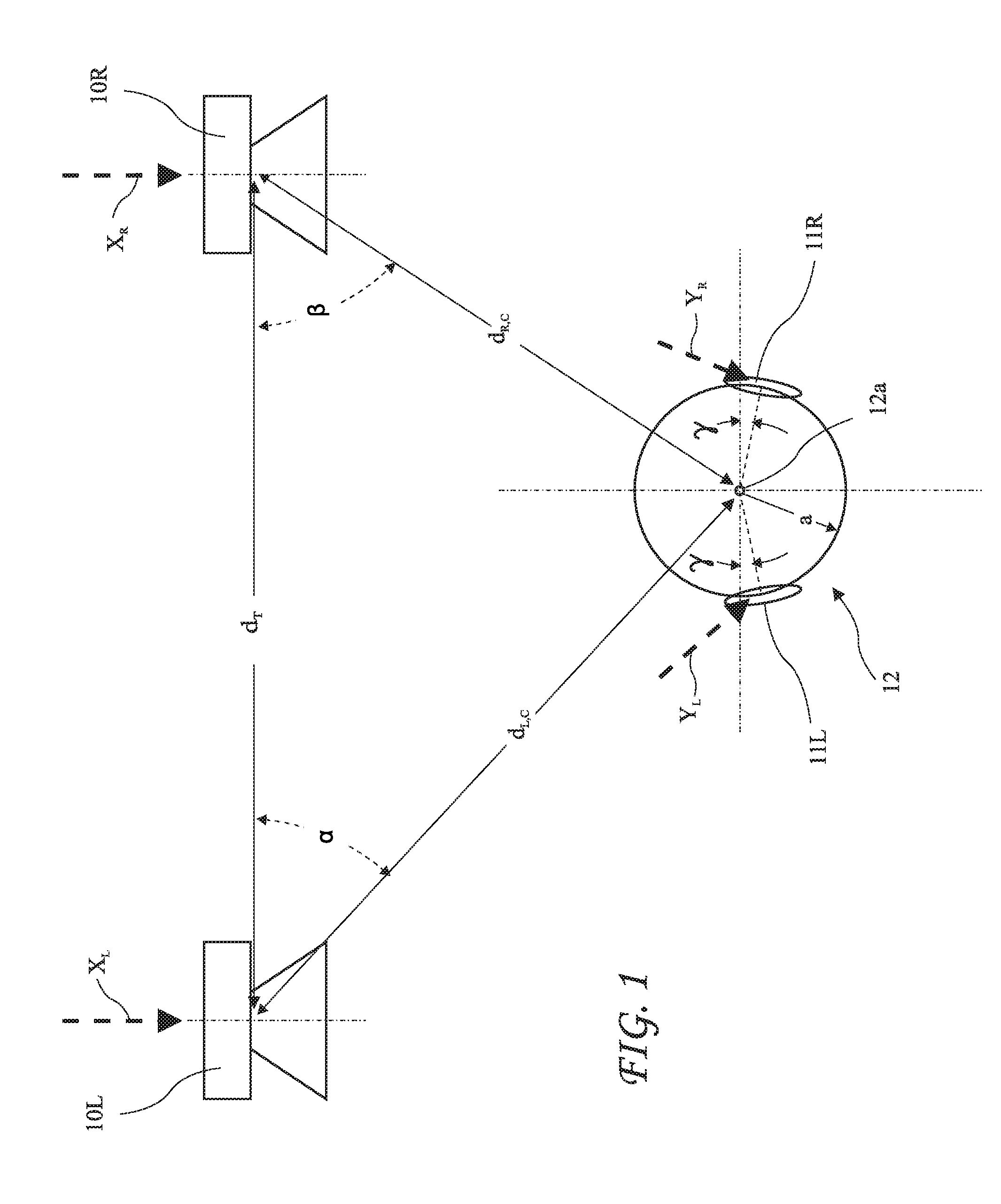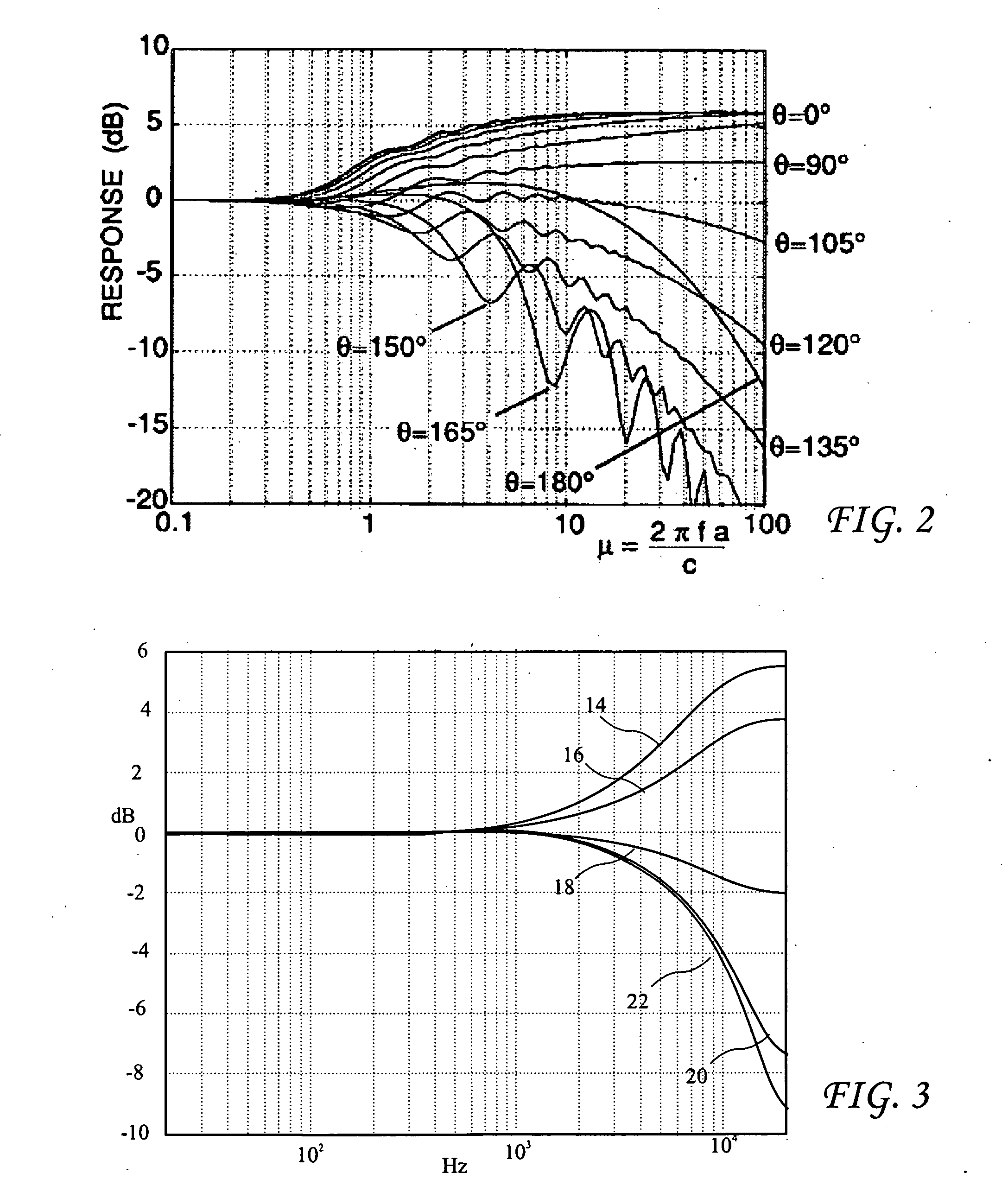Stereo expansion with binaural modeling
a binaural modeling and stereo expansion technology, applied in stereophonic systems, stereophonic arrangments, electrical appliances, etc., can solve the problems of narrow stereo imaging precluding such an experience, vocals “drowned out”& midrange coloration, and the inability to incorporate speaker-room equalization benefits
- Summary
- Abstract
- Description
- Claims
- Application Information
AI Technical Summary
Benefits of technology
Problems solved by technology
Method used
Image
Examples
Embodiment Construction
[0024]The following description is of the best mode presently contemplated for carrying out the invention. This description is not to be taken in a limiting sense, but is made merely for the purpose of describing one or more preferred embodiments of the invention. The scope of the invention should be determined with reference to the claims.
[0025]Left and right speakers (or transduces) 10L and 10R and a listener 12 are shown in FIG. 1. The speakers 10L and 10R receive left and right channel signals XL and XR and have a speaker spacing dT. Speaker response measurements may be obtained at a listener position 12a centered on the listener head 12 through two channels hL,C and hR,C. Signals YL and YR at listener ear positions 11L and 11R are determined based on direct sound based binaural response modeling because localization is governed primarily through direct sound. The distances dL,C and dR,C from left speaker 10L and from the right speaker 10R respectively to a microphone centered a...
PUM
 Login to view more
Login to view more Abstract
Description
Claims
Application Information
 Login to view more
Login to view more - R&D Engineer
- R&D Manager
- IP Professional
- Industry Leading Data Capabilities
- Powerful AI technology
- Patent DNA Extraction
Browse by: Latest US Patents, China's latest patents, Technical Efficacy Thesaurus, Application Domain, Technology Topic.
© 2024 PatSnap. All rights reserved.Legal|Privacy policy|Modern Slavery Act Transparency Statement|Sitemap



